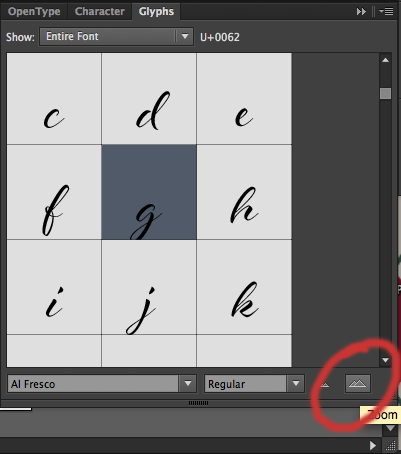

- #HOW TO USE SAMANTHA FONT GLYPHS IN INKSCAPE HOW TO#
- #HOW TO USE SAMANTHA FONT GLYPHS IN INKSCAPE CODE#
I prefer using the Hershey Text extension for that.Īnd you can take your SVG-font further to FontForge to create f.x. You can use the Custom Stroke Font – Render Text to create text with your new font. The SVG-font can now be found in the folder ….\extensions\strokefontdata. When the Ids are set you can proceed to generate the SVG-font by Custom Stroke Font – Generate font data …Īvoid space in the font name as that might cause trouble when using the SVG-font later on. As I often found myself editing the ID of the glyphs (these IDs are easily lost if you do some kind of editing of the designs) – I created an extension that effectively did this for me. It is very helpful to watch the xml editor while working on the glyphs. If you have a design of the letter a, the ID of that glyph path need to be ‘a’. Setting the glyph IDsīefore generating the SVG-font each glyphs need to be within one path and the ID need to be equal to the glyph it is representing. Then I spend some time on placing the vertical guide relative to the glyphs to have a good starting point for the kerning. Now I would hide or remove the layer with Source Glyphs. After that I adjust the x-position to make each glyph be between its vertical guides. Then I will copy all my glyphs onto the template within the layer “glyphs” and align to the baseline of the template. I have reduced the spacing of the glyphs in the template to reduce the need for scrolling when working on the glyphs. I have decreased it to 1.5 which give me less scrolling. Find the createTempl function and spcX, spcY definition.

#HOW TO USE SAMANTHA FONT GLYPHS IN INKSCAPE CODE#
I have edited the code of stroke_font_common.py to add the vertical guides and the Source Glyphs closer together. I have found the glyphs in the template too separated. When my glyphs are ready I would open a new, empty file to create the template using the Custom Stroke Font > Create Font Design Template. When the glyphs are close to finished I would make sure they are aligned to the same baseline and start using the template. Recently I have invested in a reMarkable tablet and draw a lot of sketches there, exporting to SVG. Normally I would start designing my glyphs in a separate document in Inkscape to fiddle around and work on the design. You may need to save in another location, then copy the file back to that folder.

\Inkscape\lib\python3.8\site-packages\numpy_init_.py and remove two lines from the file if sys.platform = "win32" and sys.maxsize > 2**32: NB: for Inkscape v1.0.2 and v1.1 you will need to do this simple workaround to make the extension work until the Inkscape team have fixed this:Īs described in iss ue#2187 you will need to locate.
#HOW TO USE SAMANTHA FONT GLYPHS IN INKSCAPE HOW TO#
The author of the Custom Stroke Font extension have some great videos on how to use the tools.


 0 kommentar(er)
0 kommentar(er)
